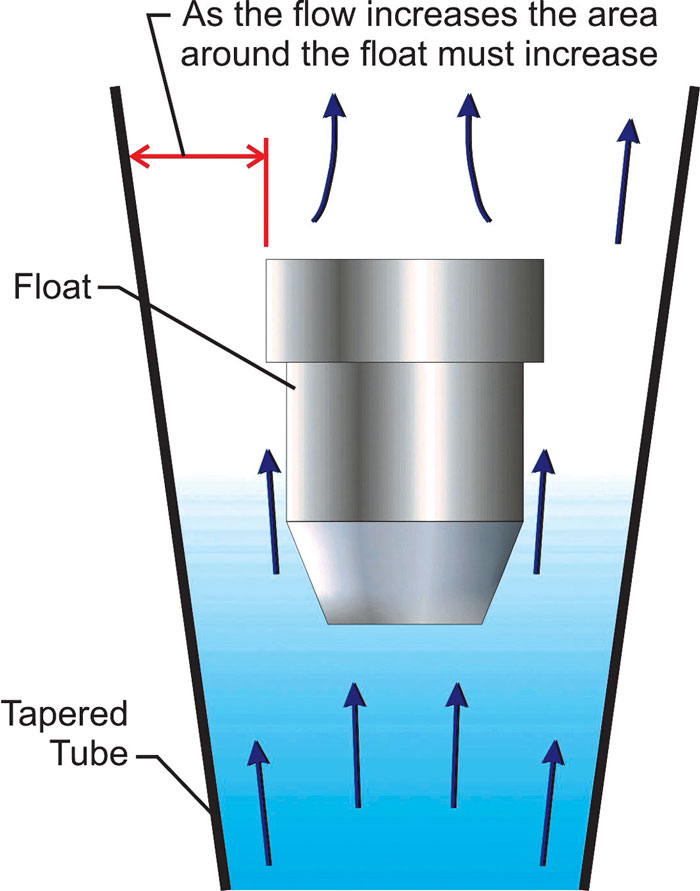Flow meters and flow measurement have been around for thousands of years, with early versions of the instruments found as far back as the Roman Era. The rudimentary meter was enhanced in the 17th century after the mathematical foundations of flow theory evolved. Today, the variety of flow meter styles has greatly expanded from those early beginnings. Some examples include variable area, positive displacement, ultrasonic and mass flow meters. Each type of flow meter has distinct features that complement use in the corresponding application and industry. End users need to know how to choose the right flow meter for their specific application. The variable area flow meter can be a cost-effective solution for many applications. The meter measures fluid flow by allowing the device’s cross-sectional area to vary in response to the flow, causing a measurable effect on the rate. The variable area flow meter offers many advantages over some more technologically advanced types, making it the meter of choice for many flow-measurement applications.
 Figure 1. Fluid through a variable area flow meter forces the float upward to indicate flow rate. (Graphic courtesy of Blue-White Industries)
Figure 1. Fluid through a variable area flow meter forces the float upward to indicate flow rate. (Graphic courtesy of Blue-White Industries)
